5 good practices on how to build happy families and raise resilient children
5 good practices on how to build happy families and raise resilient children

Representative imagePhoto: Canva
Parents and elders today not only have the responsibility to raise their children well, but also to nurture and guide them so that their children can lead fulfilling lives. And to help them in their parenting journey, Daaji, also known as Dr Kamlesh D. Patel, has penned a new book titled 'The Wisdom Bridge: Nine Principles to a Life that Echoes in the Hearts of Your Loved Ones'. "My new book puts the spotlight on the importance of wisdom in our lives. In times of uncertainty and doubt, wisdom shows the way. It helps us focus on leading a life of inspiration, one filled with meaning and purpose," he said about the book in a statement.
'The Wisdom Bridge' will be published by Ebury Press on October 17, 2022. Ahead of the book's release, here the author shares his five tips for having happy families and resilient children:
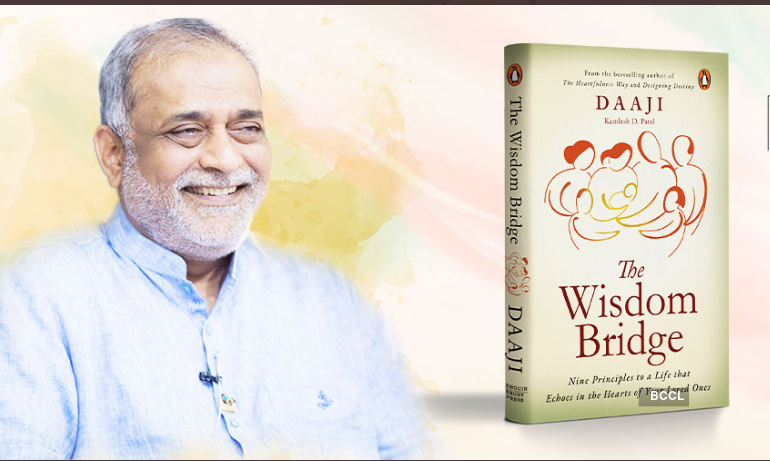
We, human beings, are unique in what we call ‘collective learning.’ It refers to the sharing, storing, and accumulating of information across generations. When our ancestors learned how to make fire or hunt game, they taught it to their children. Through cave drawings and language, they passed on their learnings to future generations. But, in the animal kingdom, if a monkey uses a stick to pluck mangoes, that knowledge dies with that monkey. There are examples of some apes with limited ability to share a skill or two. But collective learning is unique to human beings. It’s the reason why we survived mass extinction events and continue to outlast other species.
And why is this anthropology lesson important for parents? Because a family is the basic building block of collective learning in society. For a child, collective learning begins in the family. The first teacher is the mother. The right word is not teacher but ‘initiator.’ The mother gives birth to the child and initiates the child’s journey into the world. The second initiator is the father, the third initiator are the elders. No doubt, school, friends, and society play a role, but the family’s role is foundational. The family lays the groundwork for the child’s attitude, behaviour, and character. The mother, father, elders, and teachers are the initiators whose presence we are aware of. The silent presence in all our lives is the fifth initiator, whom we may call God, Source, or Nature. As a child grows up and begins to introspect the deeper meaning of life, the role of the teacher lies in imparting spiritual education.
When I was growing up, collective learning was a part of life in the village. The elders may not say much, and they may not share much, but their presence creates an environment. The way they eat, the way they talk, the way they process emotions—everything is a learning moment for our children. But children these days are growing up in increasingly smaller families. The village is not the place; it’s the people. Without the village, especially the elders, children risk losing out on collective learning.
1. Make the child feel secure and not special
During my childhood, we grew up with a sense of security and community. But I don’t remember that I was made to feel special or gifted in any way. Nowadays, there is increased emphasis on making children feel special and talented. When the spotlight shifts from a sense of security to making the child feel special for their talents, it breeds insecurity, first in the parents and then the children.
Persistent recognition of talent puts children under pressure to perform. Don’t praise children too much. For children, praise is a sound whose echo registers as a warning subtly. They may get ideas like, ‘What if next time I am not able?’, ‘What if I can’t?’ and so on. Besides this, persistent praise leads children to correlate your love and attention to their accomplishments. They begin feeling that ‘If I do well, Mother and Father will love me even more.’ Whether children win or lose, celebrate their efforts with small gestures—a weekend ice cream, maybe a movie night, or a note at their table—and then move on. The focus should be on the future. This approach will help them take both wins and losses in stride because neither means losing love.
.
2. Build wisdom bridges
To understand a wisdom bridge, let’s first understand what a bridge is. In simplest terms, a bridge is a connection where a gap once lay, a path where once none existed. The Norse gods built the Bifrost. Lord Rama built a bridge that connected what we know today as India and Sri Lanka. We are mere mortals but we are bridge builders too. To connect with another person, we build an attention bridge. To allow the flow of ideas, we build an awareness bridge. To transfer wisdom, we build a wisdom bridge.
The elders are the living wisdom bridges in society. Through them generational wisdom flows. Close association with the elders enables children to imbibe their wisdom. For example, a child can be taught morals—be kind, speak with love, judge not and so on. But when a child is with the grandparents and sees their kindness in actions, feels the softness in their speech and witnesses the calmness in their demeanour, the wisdom flows straight into the child’s heart. Parents too can teach all this, but they are busy. Grandparents have the time, and they love to share with the little ones.
3. Teach your child the mother tongue
A healthy sense of self develops from a good understanding of one’s cultural identity and tradition. This begins by teaching the child the mother tongue. Especially for NRI’s and urban parents whose children need an identity anchor, teaching the mother tongue at an early age helps with a healthy sense of self and better cognitive development. Similarly learning about one’s culture and appreciating the diversity of cultures removes the seeds of cultural bias.
When I was ten, my father sent me to the village mosque. For a few months, I received lessons, and I became so good that I even offered azan at the mosque. There were days when in the morning, I offered the azan, in the afternoon, I read books on yoga, and in the evenings, I read aloud the stories from the Mahabharata. Reflecting on this experience, I feel that it helped me understand the essence of unity across religions.
4. Become role models
You are the role models for your children. Don’t underestimate your role in shaping your child. Sometimes you may feel that whatever you are doing isn’t working but stay the course and nurture your child with values. The way you talk, the way you interact, the way you deal with others, and the way you express your concern are all opportunities to inspire the child. Use these opportunities to shift the conversation at home from acquiring to becoming, from ambition to aspiration, from superficiality to authenticity.
5. To teach responsibility, give responsibility
If we want our children to grow into responsible adults, we must give them real responsibilities early in life. Give them responsibility and let them learn from their mistakes. At work and at home, I give responsibility and trust the people to get the job done. For example, when my younger son was in medical school in India, I asked him to check out a nearby property. He took a few days to scout it and suggested that it was a good property. A week later, I called him and said that I had bought the property and now he should build a house there. I could hear the shock in his voice. He understood that I trusted him so much that after one phone call, I bought the property. And now he needed to build a house. I left everything to him. It took him a few years to complete the project. And he built a beautiful house. That experience of managing the project while studying in med school served him well as a young entrepreneur.
Views expressed above are the author's own.
READ MORE: 6 science books to read in 2022
'The Wisdom Bridge' will be published by Ebury Press on October 17, 2022. Ahead of the book's release, here the author shares his five tips for having happy families and resilient children:

We, human beings, are unique in what we call ‘collective learning.’ It refers to the sharing, storing, and accumulating of information across generations. When our ancestors learned how to make fire or hunt game, they taught it to their children. Through cave drawings and language, they passed on their learnings to future generations. But, in the animal kingdom, if a monkey uses a stick to pluck mangoes, that knowledge dies with that monkey. There are examples of some apes with limited ability to share a skill or two. But collective learning is unique to human beings. It’s the reason why we survived mass extinction events and continue to outlast other species.
And why is this anthropology lesson important for parents? Because a family is the basic building block of collective learning in society. For a child, collective learning begins in the family. The first teacher is the mother. The right word is not teacher but ‘initiator.’ The mother gives birth to the child and initiates the child’s journey into the world. The second initiator is the father, the third initiator are the elders. No doubt, school, friends, and society play a role, but the family’s role is foundational. The family lays the groundwork for the child’s attitude, behaviour, and character. The mother, father, elders, and teachers are the initiators whose presence we are aware of. The silent presence in all our lives is the fifth initiator, whom we may call God, Source, or Nature. As a child grows up and begins to introspect the deeper meaning of life, the role of the teacher lies in imparting spiritual education.
When I was growing up, collective learning was a part of life in the village. The elders may not say much, and they may not share much, but their presence creates an environment. The way they eat, the way they talk, the way they process emotions—everything is a learning moment for our children. But children these days are growing up in increasingly smaller families. The village is not the place; it’s the people. Without the village, especially the elders, children risk losing out on collective learning.
1. Make the child feel secure and not special
During my childhood, we grew up with a sense of security and community. But I don’t remember that I was made to feel special or gifted in any way. Nowadays, there is increased emphasis on making children feel special and talented. When the spotlight shifts from a sense of security to making the child feel special for their talents, it breeds insecurity, first in the parents and then the children.
Persistent recognition of talent puts children under pressure to perform. Don’t praise children too much. For children, praise is a sound whose echo registers as a warning subtly. They may get ideas like, ‘What if next time I am not able?’, ‘What if I can’t?’ and so on. Besides this, persistent praise leads children to correlate your love and attention to their accomplishments. They begin feeling that ‘If I do well, Mother and Father will love me even more.’ Whether children win or lose, celebrate their efforts with small gestures—a weekend ice cream, maybe a movie night, or a note at their table—and then move on. The focus should be on the future. This approach will help them take both wins and losses in stride because neither means losing love.
.
2. Build wisdom bridges
To understand a wisdom bridge, let’s first understand what a bridge is. In simplest terms, a bridge is a connection where a gap once lay, a path where once none existed. The Norse gods built the Bifrost. Lord Rama built a bridge that connected what we know today as India and Sri Lanka. We are mere mortals but we are bridge builders too. To connect with another person, we build an attention bridge. To allow the flow of ideas, we build an awareness bridge. To transfer wisdom, we build a wisdom bridge.
The elders are the living wisdom bridges in society. Through them generational wisdom flows. Close association with the elders enables children to imbibe their wisdom. For example, a child can be taught morals—be kind, speak with love, judge not and so on. But when a child is with the grandparents and sees their kindness in actions, feels the softness in their speech and witnesses the calmness in their demeanour, the wisdom flows straight into the child’s heart. Parents too can teach all this, but they are busy. Grandparents have the time, and they love to share with the little ones.
3. Teach your child the mother tongue
A healthy sense of self develops from a good understanding of one’s cultural identity and tradition. This begins by teaching the child the mother tongue. Especially for NRI’s and urban parents whose children need an identity anchor, teaching the mother tongue at an early age helps with a healthy sense of self and better cognitive development. Similarly learning about one’s culture and appreciating the diversity of cultures removes the seeds of cultural bias.
When I was ten, my father sent me to the village mosque. For a few months, I received lessons, and I became so good that I even offered azan at the mosque. There were days when in the morning, I offered the azan, in the afternoon, I read books on yoga, and in the evenings, I read aloud the stories from the Mahabharata. Reflecting on this experience, I feel that it helped me understand the essence of unity across religions.
4. Become role models
You are the role models for your children. Don’t underestimate your role in shaping your child. Sometimes you may feel that whatever you are doing isn’t working but stay the course and nurture your child with values. The way you talk, the way you interact, the way you deal with others, and the way you express your concern are all opportunities to inspire the child. Use these opportunities to shift the conversation at home from acquiring to becoming, from ambition to aspiration, from superficiality to authenticity.
5. To teach responsibility, give responsibility
If we want our children to grow into responsible adults, we must give them real responsibilities early in life. Give them responsibility and let them learn from their mistakes. At work and at home, I give responsibility and trust the people to get the job done. For example, when my younger son was in medical school in India, I asked him to check out a nearby property. He took a few days to scout it and suggested that it was a good property. A week later, I called him and said that I had bought the property and now he should build a house there. I could hear the shock in his voice. He understood that I trusted him so much that after one phone call, I bought the property. And now he needed to build a house. I left everything to him. It took him a few years to complete the project. And he built a beautiful house. That experience of managing the project while studying in med school served him well as a young entrepreneur.
Views expressed above are the author's own.
READ MORE: 6 science books to read in 2022
End of the article
Play Exciting Puzzles & Games!
More PuzzlesFeatured in Lifestyle

Richa-Ali wedding was a unique celebrity wedding

Actions of each zodiac sign if you played Raavan for a day

8 reasons why Amla can work wonders for people who want THICK HAIR

Try this gajra bun for Sindoor Khela and Dussehra festivities

Actor Kriti Sanon swears by THESE exercises
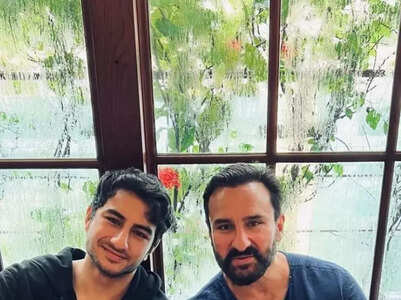
Dad traits of each zodiac sign

Hottest beauty looks from Bombay Times Fashion Week

World Teacher's Day: Images, Greetings, Pictures and GIFs

Dussehra 2022: Images, Greetings, Pictures, and GIFs
LATEST VIDEOS
Books
 Why I write, what I write with Meghnad Desai04:15
Why I write, what I write with Meghnad Desai04:15 Weekly Books News (Sept 19-25)02:29
Weekly Books News (Sept 19-25)02:29 Weekly Book News (Sept 12-18)03:19
Weekly Book News (Sept 12-18)03:19 Weekly Books News (Sept 5-11)02:58
Weekly Books News (Sept 5-11)02:58 Weekly Books News (August 29 - September 4)03:30
Weekly Books News (August 29 - September 4)03:30 Salman Rushdie on 'Truth'02:13
Salman Rushdie on 'Truth'02:13 Chef Ajay Chopra on his debut cookbook, learnings as a writer & more16:20
Chef Ajay Chopra on his debut cookbook, learnings as a writer & more16:20 Salman Rushdie reveals why doesn't he come to India often00:50
Salman Rushdie reveals why doesn't he come to India often00:50 Salman Rushdie reveals about his next novel 'Victory City'00:26
Salman Rushdie reveals about his next novel 'Victory City'00:26 Weekly Books News (August 8-14)02:20
Weekly Books News (August 8-14)02:20
StoriesSEE All




















































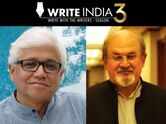
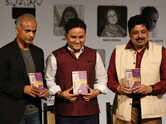
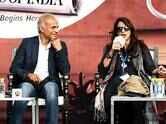
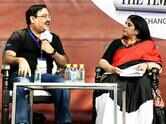
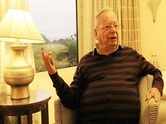





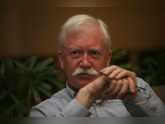
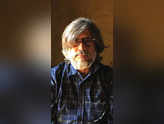











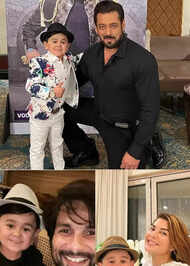















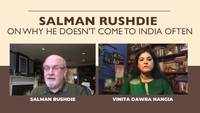
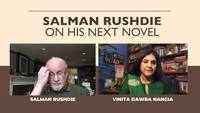

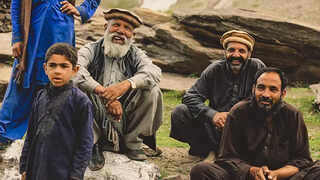




closecomments
SIGN IN WITH
FacebookGoogleEmail